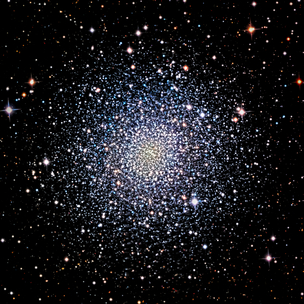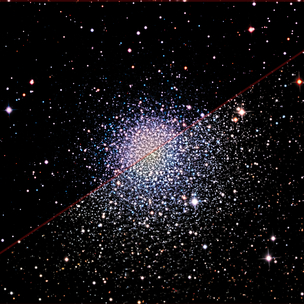M2 (NGC-7089) - Globular Cluster [Bundle Redo Edition]
0
8
M2 (NGC-7089) - Globular Cluster [Bundle Redo Edition]
About a week ago, I only had access to 2 observations of M2, but since then have acquired the full bundle dataset. So this is a remake now based on the bundle data - Total Exposure Time 5h 25min.
Other than the better/more data, after I finished work in PixInsight, and started post processing in StarTools - I've produced a few different targeted results, with different exposures, stars shrinking/tightening at different radiuses from the centre, getting the best exposed results of different parts of the globular cluster (see 2nd attached photo which is a diagonal split of 2 of the many different processed images I used to blend the final result). Different processed results were blended together in Photoshop with temperature/color/exposure corrections so it became the one image you see here. Last but not least I've further boosted the resolution in Topaz Gigapixel AI.
For those who have worked on globular clusters before, you'd know well the challenges of getting evenly distributed stars, with no overexposed centres and underexposed outside parts. Only Hubble telescope can get it perfect (see Wikipedia :), the rest of us need to work really hard to get a close enough result. Hopefully I've done it justice. I've worked previously on globular clusters a few times, but this is by far the one I've spent the most time and effort on.
Wiki info: Messier 2 or M2 (also designated NGC 7089) is a globular cluster in the constellation Aquarius, five degrees north of the star Beta Aquarii. It was discovered by Jean-Dominique Maraldi in 1746, and is one of the largest known globular clusters.
Other than the better/more data, after I finished work in PixInsight, and started post processing in StarTools - I've produced a few different targeted results, with different exposures, stars shrinking/tightening at different radiuses from the centre, getting the best exposed results of different parts of the globular cluster (see 2nd attached photo which is a diagonal split of 2 of the many different processed images I used to blend the final result). Different processed results were blended together in Photoshop with temperature/color/exposure corrections so it became the one image you see here. Last but not least I've further boosted the resolution in Topaz Gigapixel AI.
For those who have worked on globular clusters before, you'd know well the challenges of getting evenly distributed stars, with no overexposed centres and underexposed outside parts. Only Hubble telescope can get it perfect (see Wikipedia :), the rest of us need to work really hard to get a close enough result. Hopefully I've done it justice. I've worked previously on globular clusters a few times, but this is by far the one I've spent the most time and effort on.
Wiki info: Messier 2 or M2 (also designated NGC 7089) is a globular cluster in the constellation Aquarius, five degrees north of the star Beta Aquarii. It was discovered by Jean-Dominique Maraldi in 1746, and is one of the largest known globular clusters.
SPECIFICATIONS
Telescope
CHI-1 / Planewave CDK24
Camera
CMOS / QHY 600M (@ 2x bining)
Location
Chile
Date of observation
16.05 - 14.06 2023
Filters
LRGB
Processing
PixInsight, StarTools, Adobe Photoshop, Topaz Gigapixel
Credits
Lachezar Vladikov / Telescope Live

![M2 (NGC-7089) - Globular Cluster [Bundle Redo Edition]](/sites/default/files/styles/photo_main/public/2023-06/NGC-7089-M2-202305-06-bundle-Globular-Cluster-TelescopeLive-CHI-1-CMOS-LRGB-sm.jpg?itok=jg1p9P7O)



